Lessons from a 1967 Child's Book
Evan's Corner tells the story of a little boy who managed to carve out his own private space in a crowded Harlem apartment.
Every once in awhile my mind will seize upon a book that I loved as a child. Usually I’ll recall bits of the storyline but not the title. Evan’s Corner was one of these deeply buried books in my cluttered memory bank.
I’ve thought about it many times but never bothered trying to use modern tools (like Google) to find it. Now that my design focus is widening from she sheds to various zones inside the home, Evan’s Corner began to take on more shape and urgency. I knew there were great lessons within.
I used all of the snippets of the plot that I could remember to create a search query. The result went something like this:
“Children’s book city boy creates own corner in small apartment”
Happily, my search yielded fruit. Evan’s Corner is the book I checked out as a little girl in the Santa Rosa Public Library sometime in the late 60s/early 70s. I ordered the 1967 edition as well as one that was updated in 1991 with a new illustrator (I’ll explain why later). To hold it in my hands after so many years was a really joyful experience.
Here’s the Story
The book tells the story of Evan, a young boy of maybe 8 or 9 who lives in Harlem with his parents and five siblings. They live in a 2-room flat, and we know that his mother is a housekeeper and must share a kitchen with a neighbor down the hall.
Evan longs for a place that belongs just to him, where he can escape the noise and be in charge. He asks his mother for ideas; and as mothers always do, she came through. “There are eight of us,” his mother says. “That means each of us can have a corner.”
Evan is delighted and immediately claims his corner, the only one with a bit of polished floor and a window. From there, he embarks on various journeys through the neighborhood to fix up his corner. He paints a picture in school, snags two orange crates from the local grocer to use as furniture, and digs up a flowering weed in the playground to display on the windowsill. In order to earn money for the pet turtle he’s been eyeing in the pet store, Evan hangs around the grocery store and offers to help ladies home with their bags.
At last, the corner is complete. But is it? Evan learns that having his own place is wonderful but often lonely. He ends up dividing his time between his own place and being part of his family. At the end of the book, he offers to help his brother Adam fix up his corner, too.
Why the Art Matters
I was struck by the profound way the art affected the storyline in each of the editions. The first edition was illustrated by Nancy Grossman and I suspect it was kind of a side hustle for her. (Nevertheless, she spent many hours in a Harlem neighborhood, observing and sketching scenes to prepare.) Grossman was an aspiring sculptor who was already capturing serious attention with her mastery of modern expression in all forms, from sculpture to art, printmaking, and assemblage.
The original cover (above) shows Evan walking down the street of his neighborhood, carefully carrying the turtle in its bowl that he just purchased with hard-earned cash. Note the interesting two-tone palette; shades of grey, black, and red. It definitely evokes the urban setting, suggesting a life that is not easy yet warm-blooded and nurtured by human connection.
I love the depictions of Evan and his family in the original, like this one (down to the “latchkey” hanging around Evan’s neck).
Grossman focuses primarily on Evan’s surroundings, especially his exterior life. Her art tells us that the important thing about Evan’s quest is his interactions with his family, schoolteacher, merchants, and neighbors.
This 1991 edition was illustrated by Sandra Speidel, a figurative and abstract painter with many books and exhibitions to her credit. The cover art is magnificent in how it shows Evan’s completely designed little corner. The details are really wonderful — rustic wood crates turned this way and that, scotch tape placed diagonally on each corner of the painting, wind coming in to flutter the curtains where a small flowering plant preens. Evan has his turtle in a flat bowl on the little desk, but notice how his attention is turned towards his family. Speidel also takes pains to convey Evan’s conflict—when does aloneness become loneliness? For a little boy, the answer is “soon.”
For a young girl like me trying to wrest independence from two domineering older sisters, loving this book was all about the how-to. What did he sit on, how did he decorate, did his family really leave him alone when the corner was complete?
Using this criteria, I find in favor of the 1991 edition. What’s your vote?
Inspired by Evan’s Corner
Corners are no longer relegated to the family troublemaker. As far as I’m concerned, “go stand in the corner” means it’s reading time, or quiet correspondence, or window gazing. Here are a few ideas for corner living, inspired by my favorite Harlem kid.
(Photo: Houzz)
(Photo: Lincoln Barbour for the New York Times)
(Photo: Two Turtles by Utagawa Hiroshige; the National Museum of Asian Art)
(Photo: A Garden for the House)



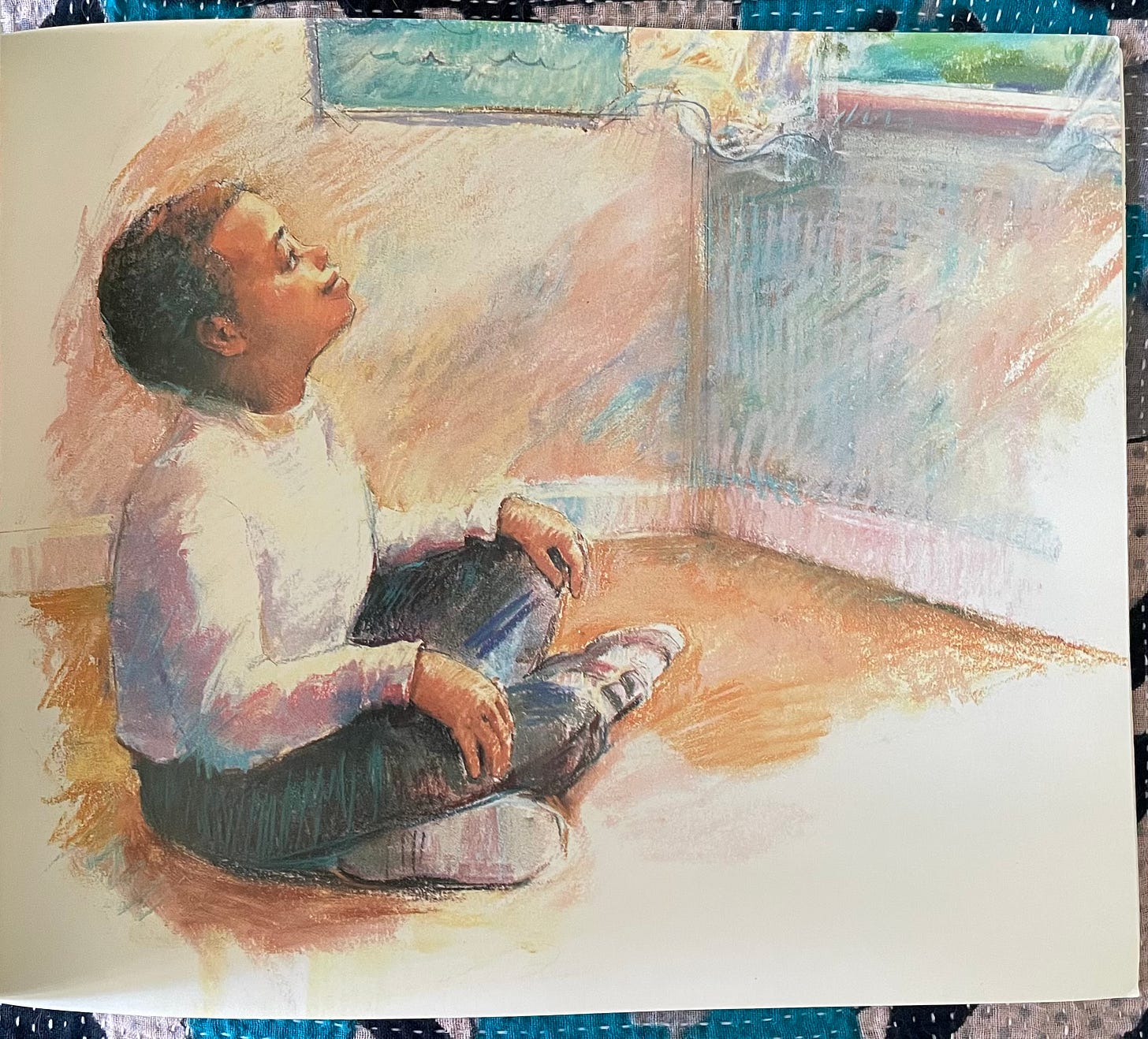
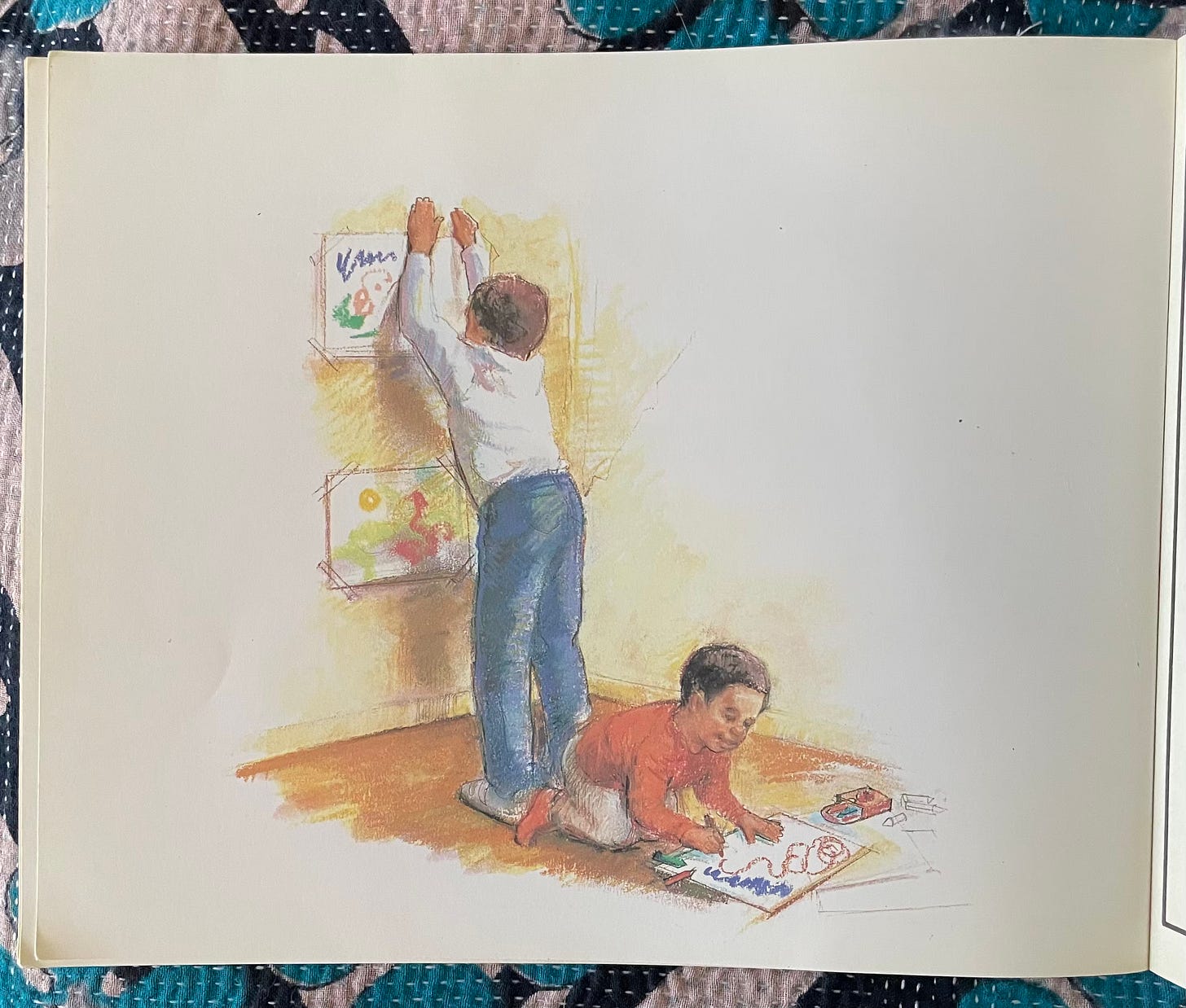

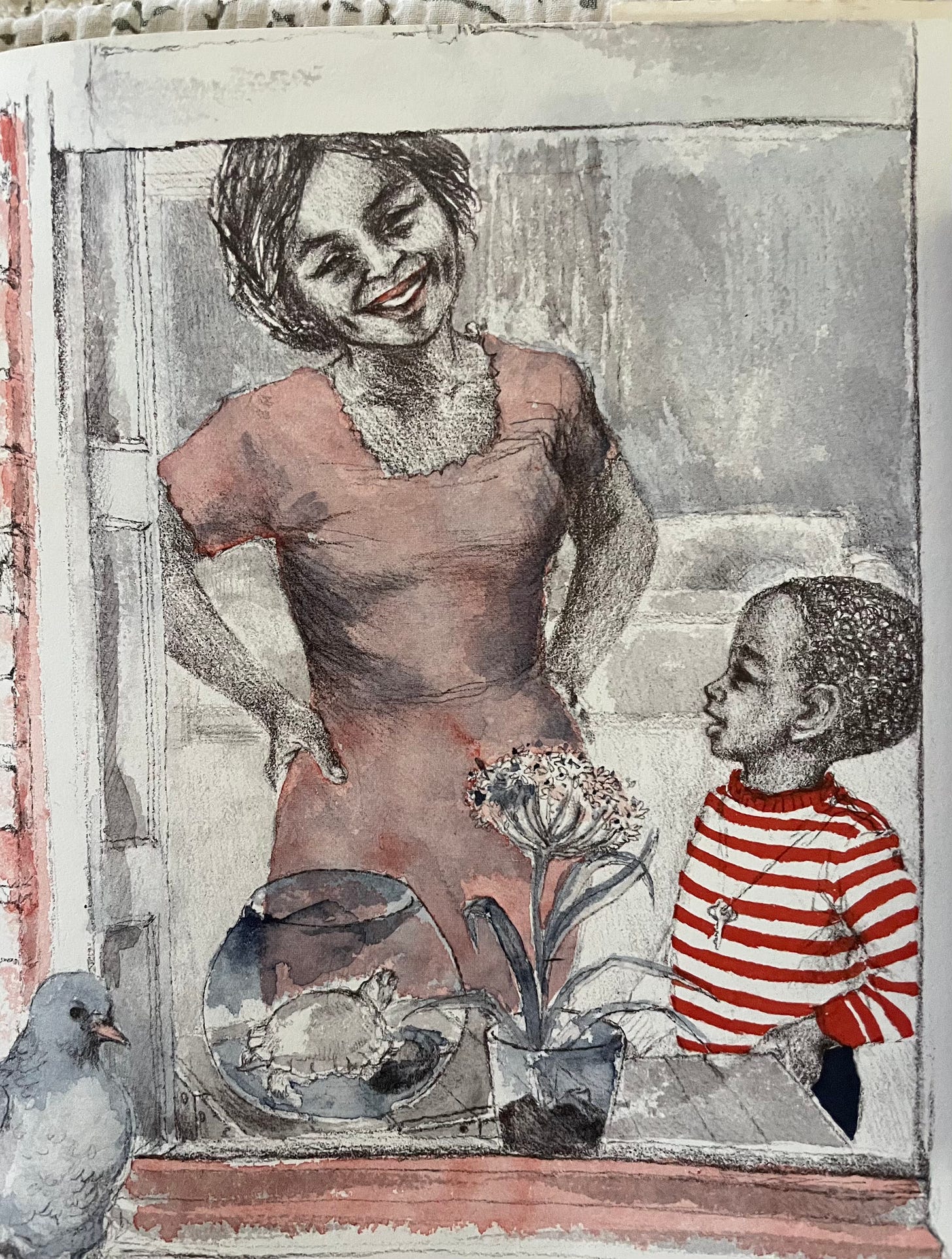
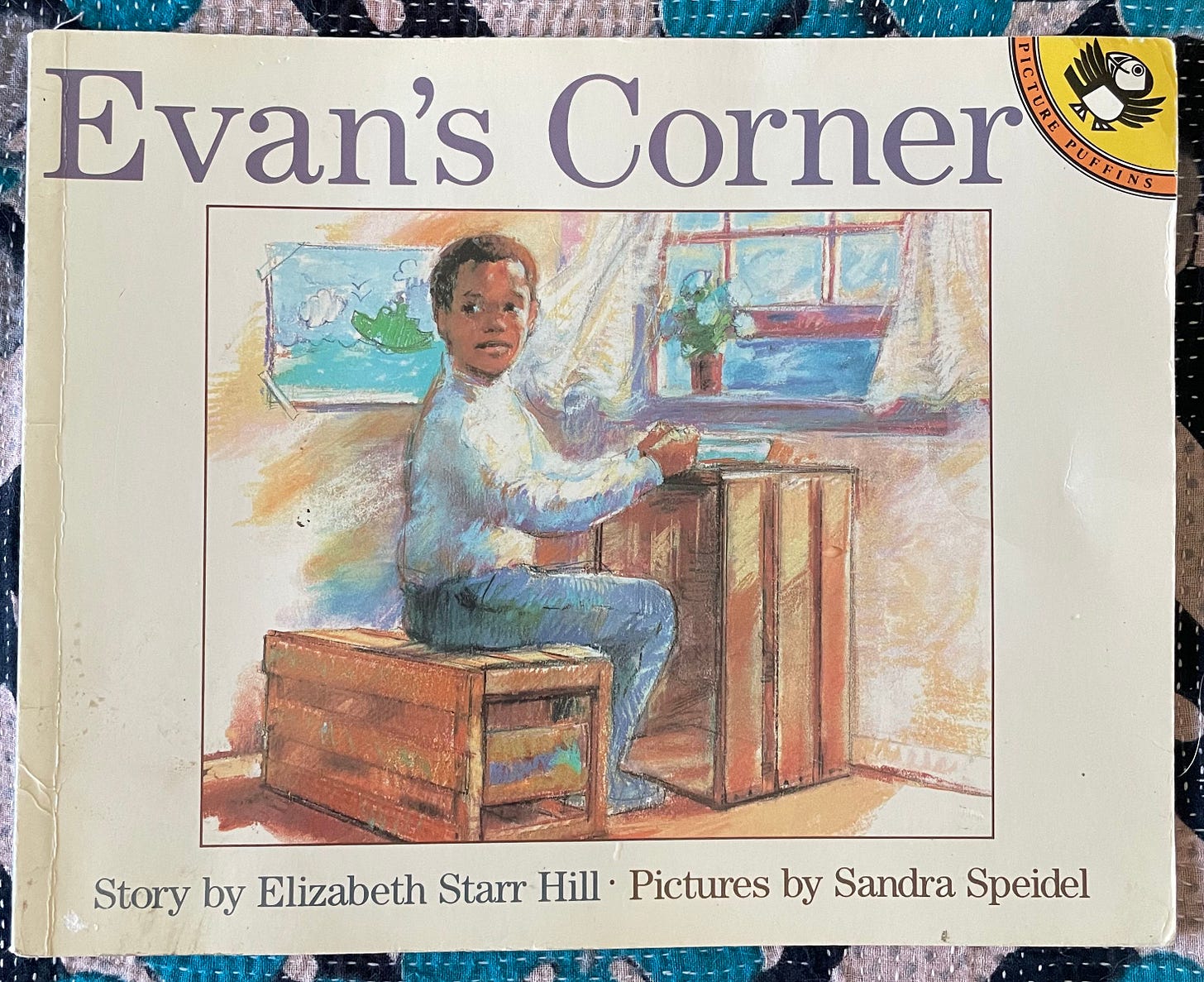
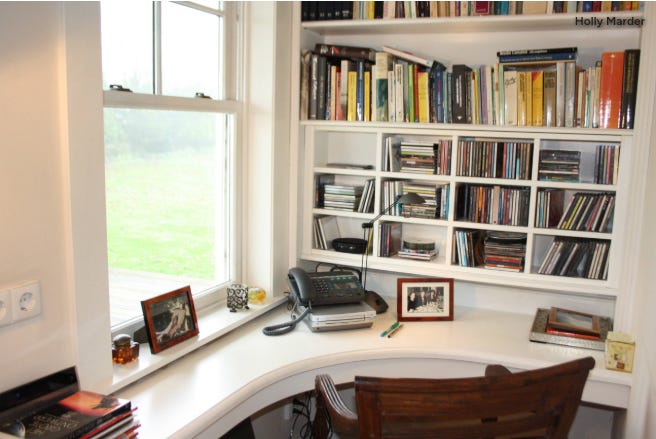
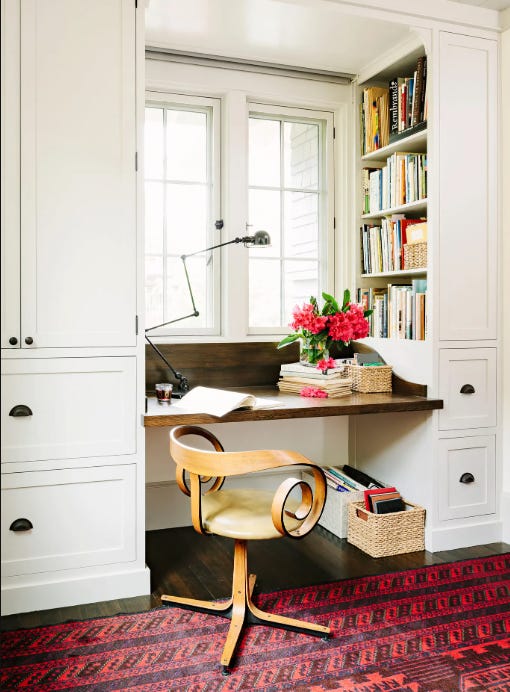


I so enjoyed reading this and realizing that as children we were always finding places, inside and out, to construct a fort, a place where we could be the boss. A small private place of my own is still desirable, I just don’t call it a fort anymore.